One August morning, in 2023, I rode around on the trails in Sapwi Community Park. This prologue had become my standard warm-up before rolling up Albertson Fire Road to China Flat and beyond. I noticed that the trail fairies had built a new one in Sapwi. The trail featured turns with banked switchbacks. It began near the Westlake Boulevard parking lot near the top of the park and continued down past the pump track. Although there was no sign indicating whether the trail was one way, the banked edges at each curve was a clue. On a subsequent morning I arrived earlier, just so I could I ride up the trail before turning around and riding in the direction the trailblazers had intended.
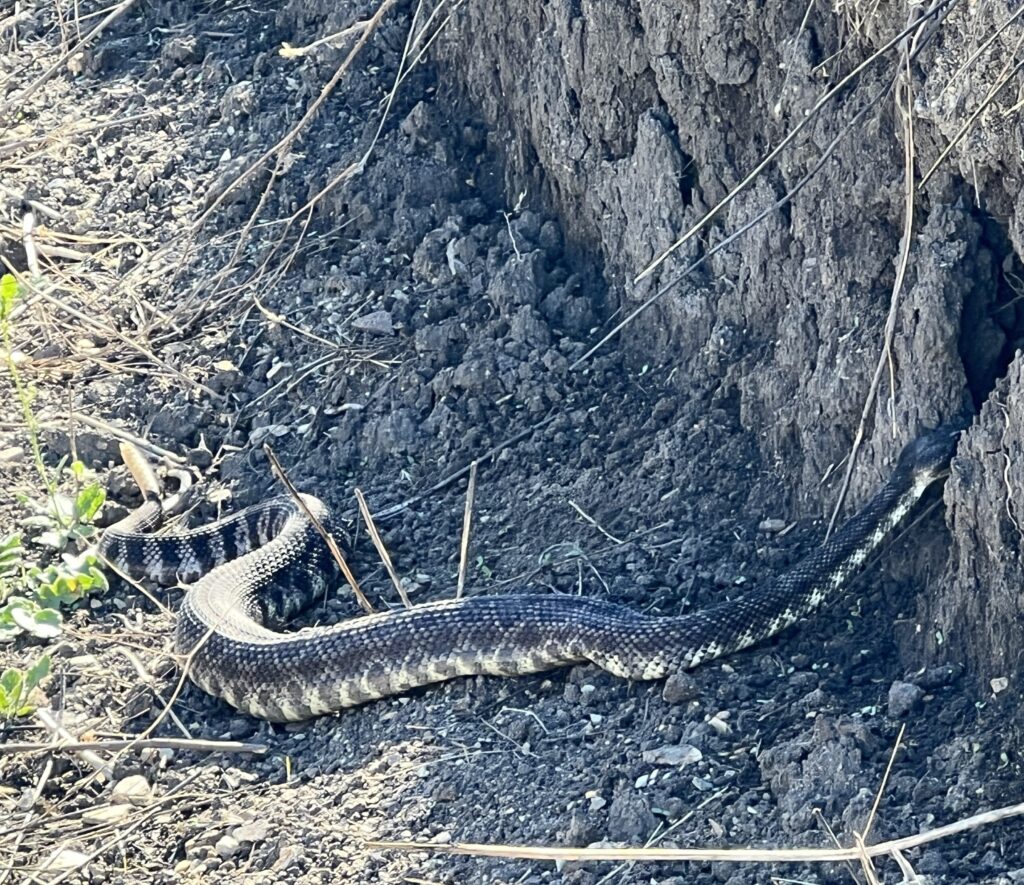
Part way down the trail I made a quick stop at an active Crotalus oreganus ssp. helleri crossing.
The snake was, at first glance, heading slightly downhill, but that might have had something to do with it having noticed the vibrations from my encroachment upon its territory. After thirty seconds or so, it gradually turned and entered a burrow in the dirt embankment. I continued on, finished my warmup and rode up Lang Ranch road to the Albertson trailhead.
About half-way through my climb to China Flat I realized that I was not going to ride to the end of Albertson, much less head up to the windmill and flag monument on the promontory that overlooked Bell Canyon and beyond.
For my body and mind, 2023 was a year seasoned with obstacles and setbacks, the kind that required lots of physical therapy appointments and a couple of epidurals. The aging progress usually proceeds at a gradual rate. While a gentle decline is typical, the possibility of encountering one or more precipitous drops along the path is always there. The journey is not a straight line.
I may be able to hammer uphill again sometime. In the meantime, I will finish what I started writing about last year: the recycled art installation that overlooks Bell Canyon.
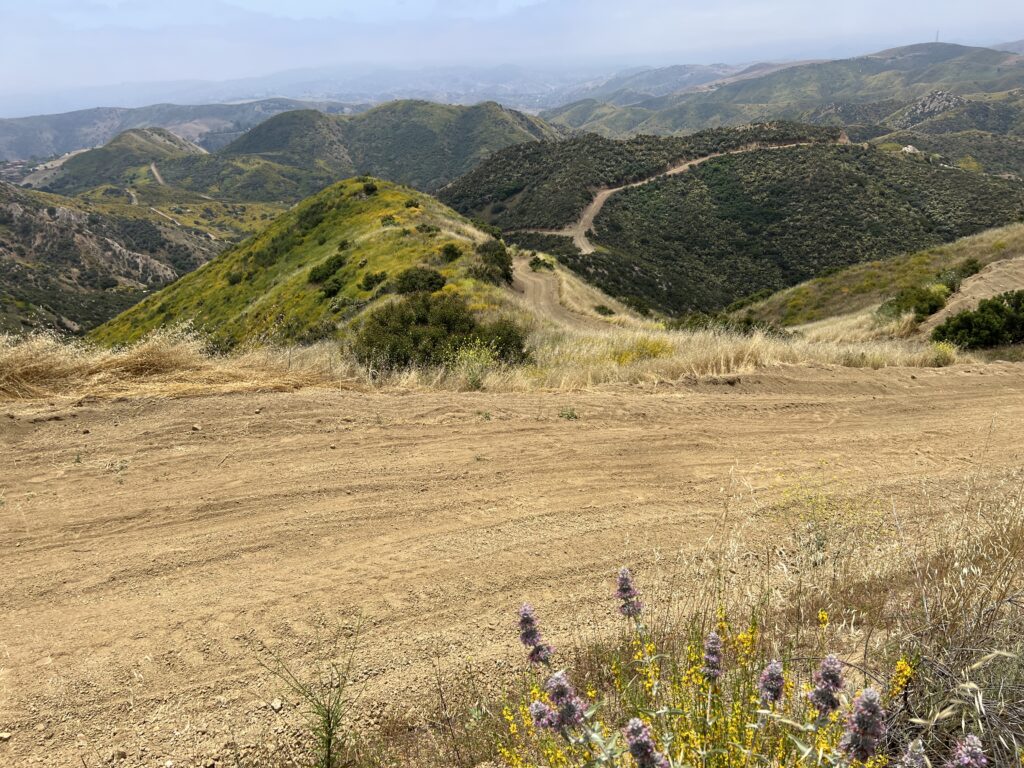
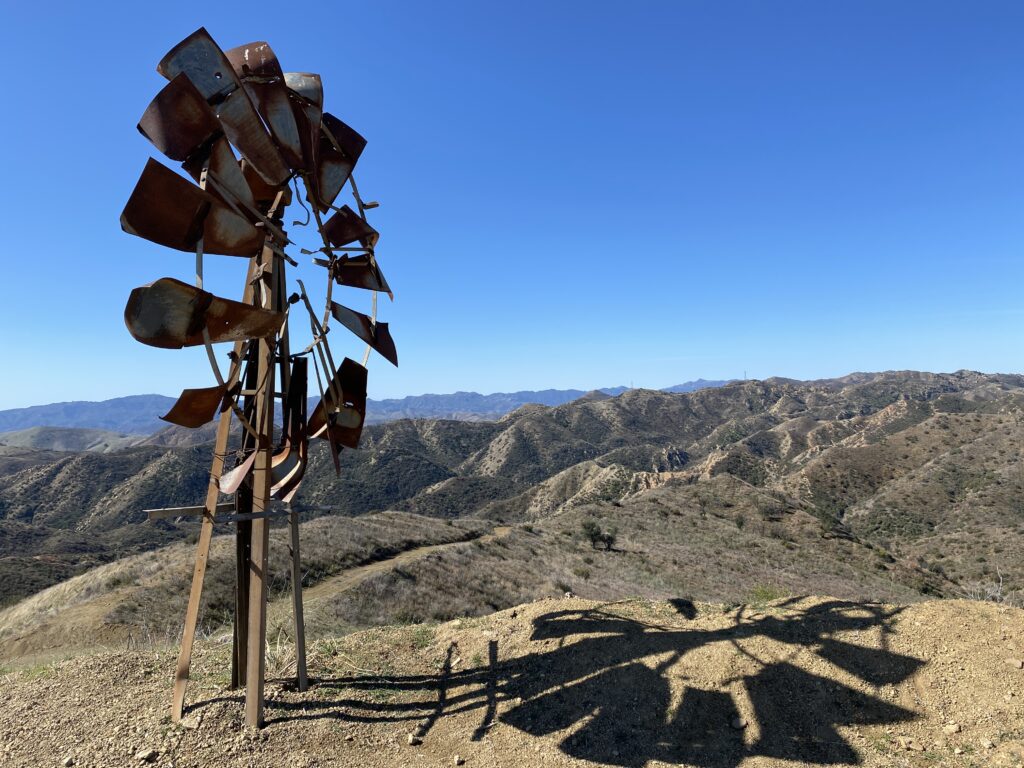
For a long time it was just a solitary windmill in a pocket of wilderness. I first noticed it during a ride on March 16, 2021. I found a fire road approach and rode up to get a closer look. I assumed it had been functional at some point in the past. Perhaps it was a solitary memento of a long gone farm. But if that was the case, then where were the remains of the farm buildings?
When one has a predilection for formulating speculative answers to unimportant questions such as “What was this windmill doing here when it was shiny and new?”–being prepared to discard one’s own theory of the case is a good habit to cultivate. To acknowledge an error is to accept that there is more to learn. The habit of curiosity is rewards the seeker. Previously hidden vistas appear, along with the freedom to continue one’s inquiry informed by the clarity acquired through failure.
The windmill was a shiny, new thing at some point, but it had spent its prime somewhere else. Someone found the windmill abandoned and partially buried in Simi Valley. That someone brought it to the hilltop where it now stands. I will call him “S.” because he told me he would prefer to remain anonymous.
My first and only impression of S. was that he had a cowboy vibe about him. Instead of a horse, his mount was a very large piece of heavy equipment. Cowpoke footwear would be impractical in his line of work, a Stetson superfluous. He was a post-modern frontiersman wearing heavy duty coveralls and lug-soled boots. The rugged appearance of the crew along with two or three monster-sized pieces of equipment was offset by a friendly welcome as I reached the top of the hill.
S. was loquacious. As I listened to him, I was reminded of the nickname my late father coined for a dear friend of mine, R. After meeting R., my father started referring to him by the nickname: Talk-A-Lot. R. had a habit of spinning continuous yarns into grand monologue. The casual listener might come away with an impression that this was bordering on so much random chatter, but I think it was more like a stream of stories. I ran lots of miles on the Columbia Trail in New Jersey with R., so I had many hours of experience upon which to base this conclusion. Within each of R.’s vignettes, there was a recognizable plot, followed by a resolution with which R. launched himself off into the next–often but not always–unrelated story.
While I chatted with the guys beside the windmill, S. rolled out several stories, including the one about where the windmill had come from. He also warned me about heading down the Upper Las Virgenes Canyon trail solo because there were mountain lions down there. I have encountered variations of this type of caution before.
Back when I ran and raced on the roads and trails in New Jersey, I was occasionally warned not to run alone on the Delaware & Raritan Canal because of predators of the human kind. Only the ghosts of mountain lions (and wolves) remain in New Jersey. Their manifestations in the flesh were extirpated by humans from the state long ago. I moved to California with my husband in 2011. Since then, cycling has replaced running, not by choice, but I have embraced the change. I do ride alone a good amount, but I avoid thinking about mountain lions lurking about when I am out there. I am glad that they still exist here, and I hope they stay away from poisoned rats and from people who do not want to share the land with Puma concolor.
I could have pointed out to S. that mountain lions have more important things to do than stalking humans, for example: 1) hunting mule deer and 2) avoiding humans. But, I suspected he knew that already. I was on full receiving mode and did not want to interfere with the flow.
I am grateful to have been gifted with an innate curiosity about the world. Much of that cherished attribute may have been due to nurture rather nature. I think that each of my parents had this quality as well, although their areas of focus were quite different. In any case, they passed the gift of being curious about the world on to me.
As for S., one hour of listening is not enough to get to know a person. Other than his profession, his enduring interest in repurposing discarded metal objects and a flare for telling captivating stories, S. remains a mystery to me.
The first humans to discover the continent were the ancient Paleo-Indians who arrived during the late Pleistocene, in an era when megafauna held well-established evolutionary niches within the biome. By the time the Vikings sighted the new continent, most of the megafauna in North American had gone extinct. Indigenous tribes, descendants of the Paleo-Indians, had already established themselves across the continent. They had distinct cultures and deep knowledge of the land, plants and animals around them. They had developed techniques for shaping the territory around them to feed, shelter and cloth themselves. Unique origin stories, oral traditions, music and art were threads running through the weave of daily life.
Frontier in its strictest, literal sense, is a pristine land unmodified by humans. That frontier is long extinct, at least on the North American continent. It certainly did not exist when the first Europeans made contact and started making a mess of things. The frontier was already settled.
To be fair, the newcomers looking for a new start did not know at first that the indigenous peoples of the Americas had no immunity to smallpox and the several other contagious diseases that they carried with them across the Atlantic. To be honest, they raped women, tortured and killed millions of people who they deemed to be subhuman. They wiped out entire, distinct civilizations in a quest for land, wealth and resources, along with much of the cultural knowledge and wisdom accrued by diverse settlements over thousands of years. Had the prime directive been about finding a way to equitably share the land and resources and to exchange knowledge, I think our country, perhaps even the world, would be quite different today.
Conquest, violence and appropriation are not good long term strategies for establishing an enduring civilization or nation from the foundation up. Misplacing, or intentionally de-calibrating the moral compass for a time may be expedient, but the price of relocating it or sending it off for extended repair is that the behavior that ensues while the compass is missing or out-of-order must be accounted for, sooner or later, often with much interest accrued. We see this mistake repeated in so many iterations, throughout recorded history and to this day. Listen to Paul M. M. Cooper’s Fall of Civilizations podcast, or read his book, for many examples of this apparently infinite loop.
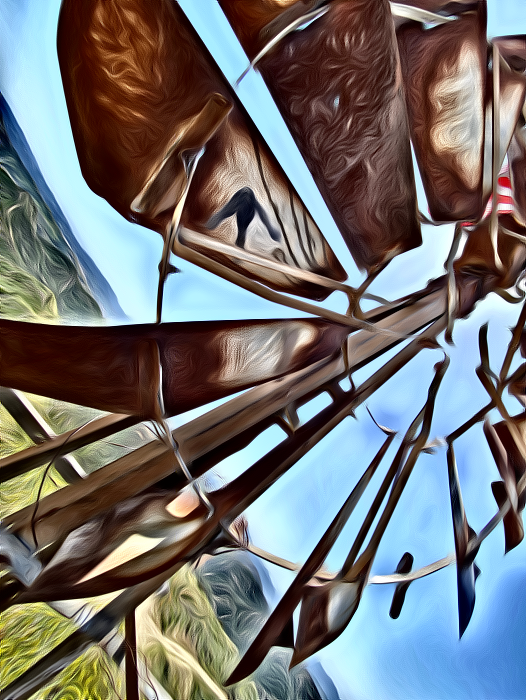
The concept of frontier lives on though–it is in fact, wide open and limited only by the imagination. A frontier can be anywhere a person draws a line and envisions it to be. The frontier is a border beyond which lies, a territory, an idea, something to explore. S. creates post-frontier art in a natural setting. In so doing, he has made a new frontier visible.
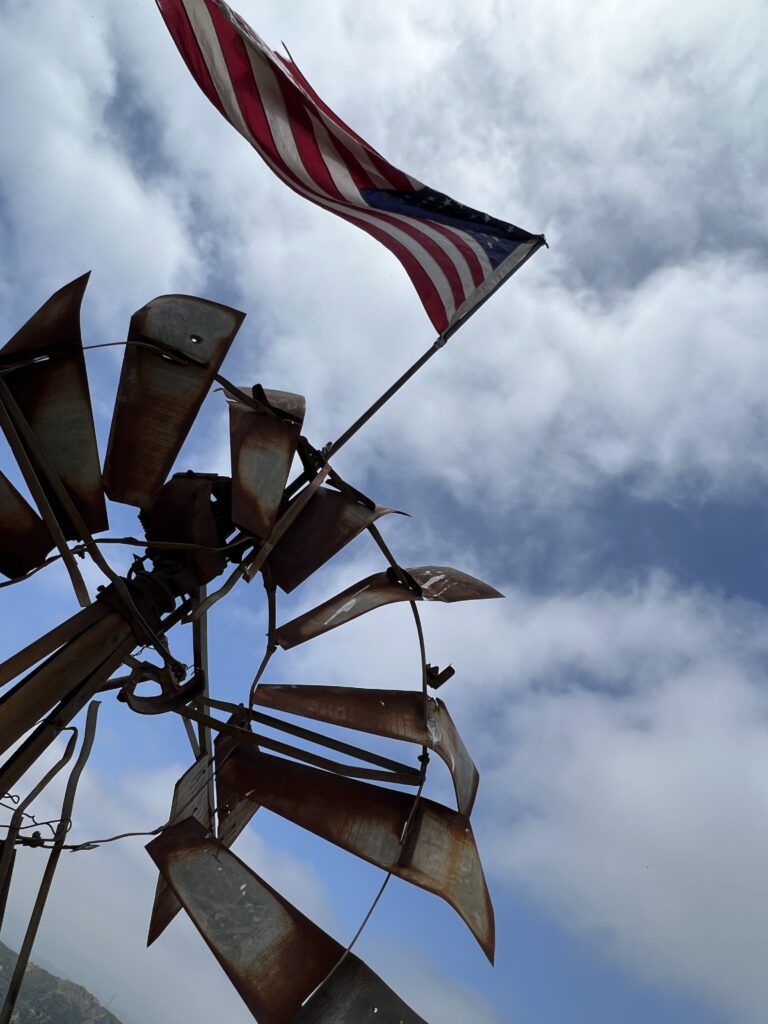
Over time the windmill became a waypoint or destination for mountain bikers.
One day I arrived to find that the windmill, resolute and unyielding despite its edges scourge by rust, had been topped by a flag. The flag rippled and unfurled in the wind.

A round, very rusty metal shelter, soon joined the windmill. S. had positioned the shelter to the left of the windmill and flag. The walls were pocked with holes. I tried taking photos through the rusted out openings. I heard that last winter the wind blew it over and part way down a hill. S. must have put it back in place.
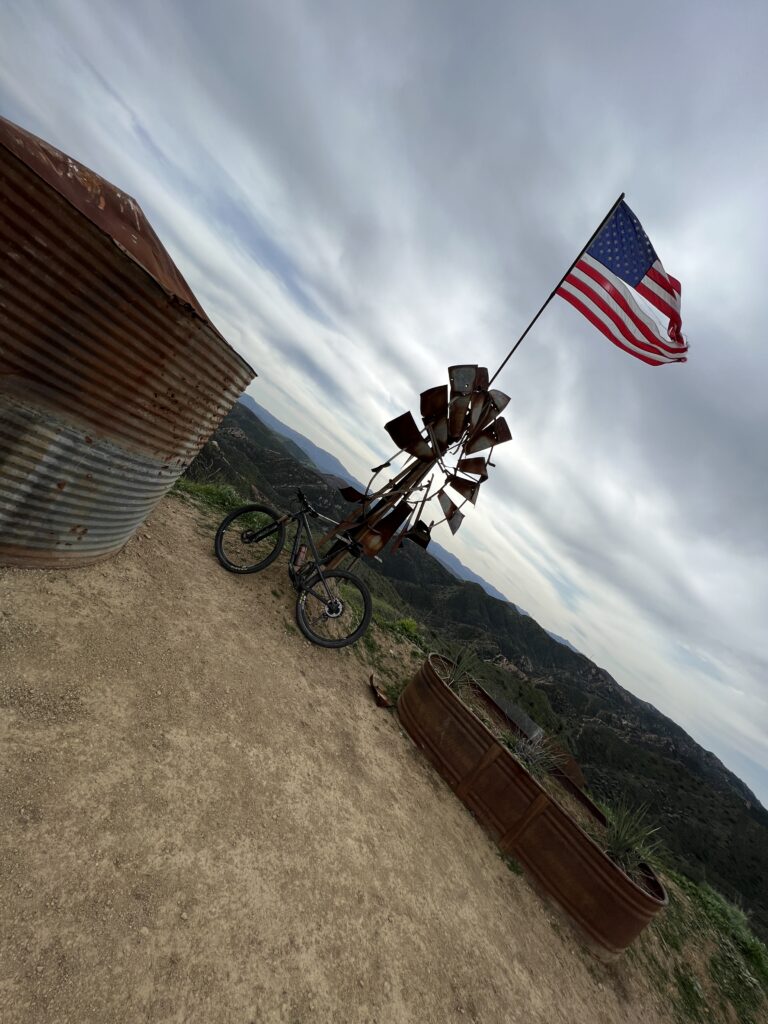
At some point during the fall or early winter of 2022, a large, rusty watering trough appeared to the right of the windmill. Someone had filled it with soil and planted two Chaparral Yuccas. I suspected that this was S.’s addition, because it would have required some heavy equipment to get the soil up there. If I see him again, I will ask.
By late winter the flag was showing some wear. The stripes of the lower half had separated from the block of stars and adjacent stripes of the upper half.
Spring brought signs that the windmill site had become a space for ad hoc collaboration. Someone had planted radishes in the trough. By the time I rode up to the top again, the radishes were ready to eat! Two Goldenstar native wildflowers were in bloom as well, next to the radishes. The Goldenstars probably came with soil transferred when S. planted the yuccas, because this perennial stores the energy it needs to produce leaf, stem and eventually buds in an underground corm, a thickened root base that gathers up all the energy the plant needs to return in subsequent seasons. It takes time for a seed to develop into a robust corm: the ...seeds…require three to four years to become a mature plant.

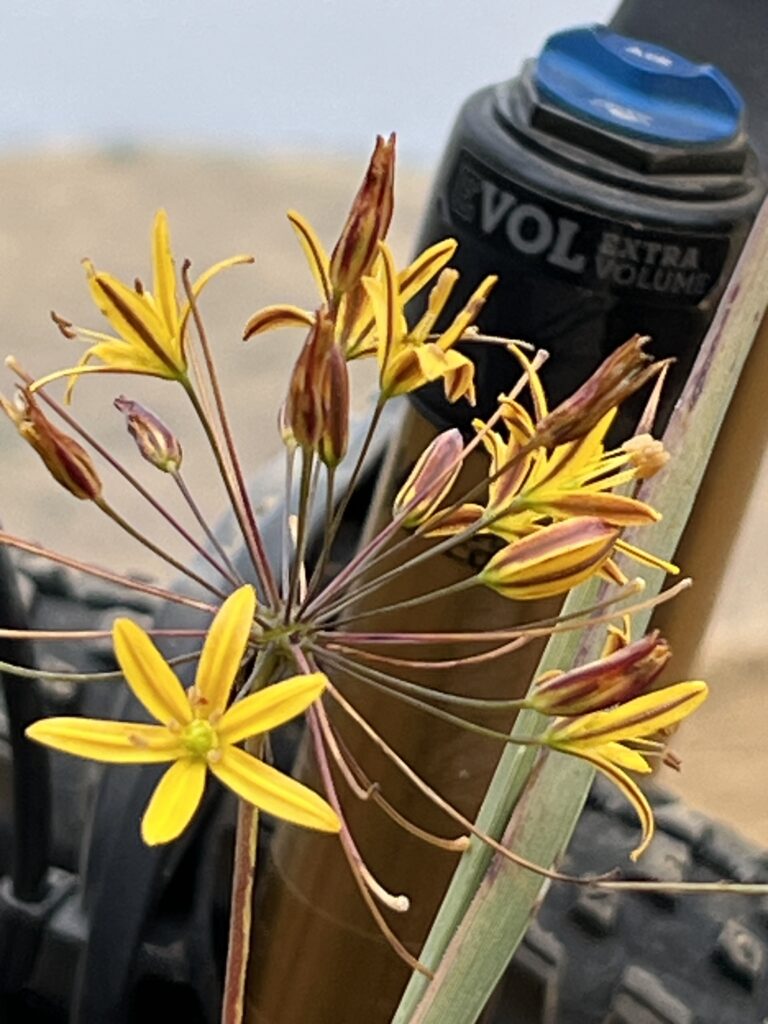
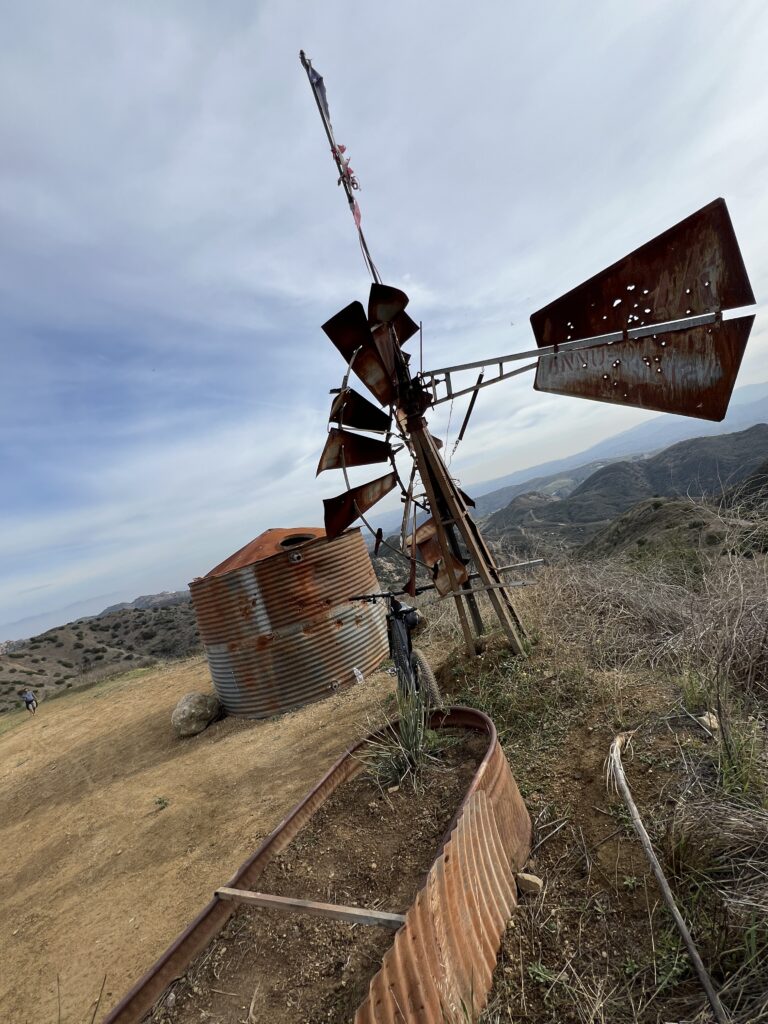
I finally made it back up to the windmill on December 27, 2023. The chaparral yucca transplants had survived the summer. The Goldenstars had gone dormant. I will look for their return this spring. The radishes were putting up new leaves, prompted by several days of rain. The flag was but a wisp a fabric, worn away by the elements. I lingered there, as usual.
Two hikers I had passed on the final climb up soon joined me at the top. We chatted about the trails and bicycling and noted some people we knew in common. A. said she only hiked, did not ride. Today was her first visit to the windmill. N. was a cyclist.
When I expressed my wonder at the mystery of the radishes, N. smiled and confided, with a tinge of mischievous pride, that he and his brother V. had planted them and scattered a packet of wildflower seeds early in the year. I remarked on the strip of fabric, all that was left of the flag. N. said that when he returned to the spot on his bike, he would bring a new flag with him. Who planted the radishes? A happy mystery solved. I was so glad that I made it to the windmill that day.
I propose that when S. excavated the windmill and its companions from Earth’s most recent dustbin blanket, from the paper-thin top layer of sediment accumulated during a time blip equalling something less than a nanosecond that is sometimes referred to as the so-called Anthropocene, he gave them a new purpose. Had they not been plucked from the recent tailings of human industry, such remnants would have become, in much less time than the millennia required for the total decomposition of a plastic bag, just some dust on the mantle. They would never, ever have found each other until, perhaps, some eons from now, their atoms recombined.
United, in the third decade of the 21st century, they have become something greater than their individual parts. Thank you S.
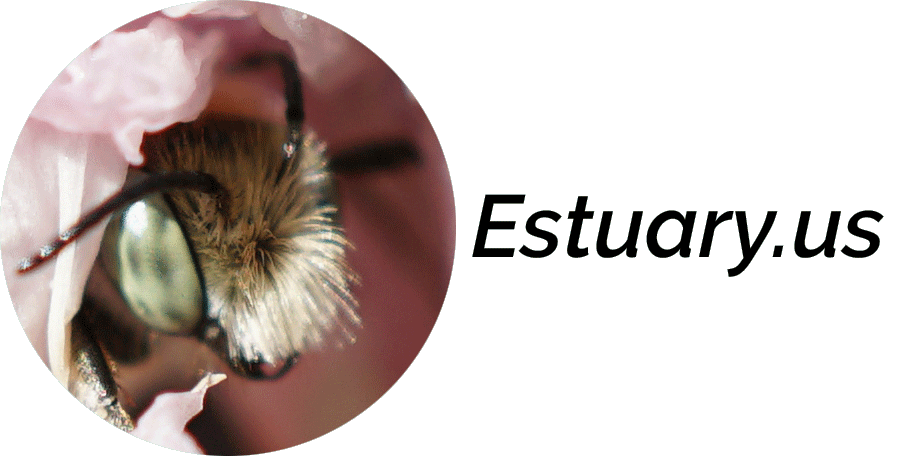
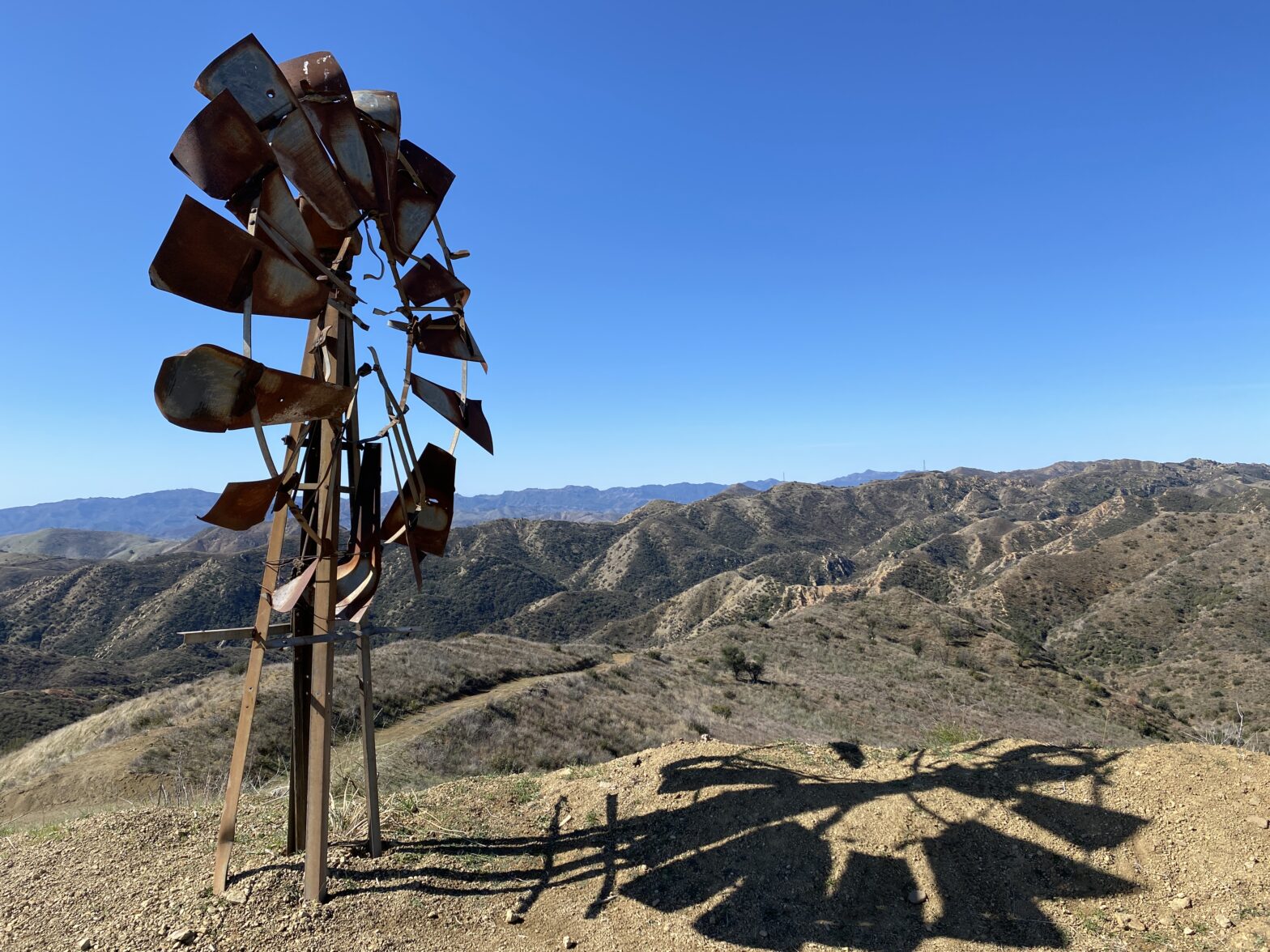
I love your curiosity combined with patience — the way you take your time to allow for happenstance encounters with people and objects that anyone else could have easily missed. And also for sharing them.
Thanks Beth. Let’s plan a spring hike!